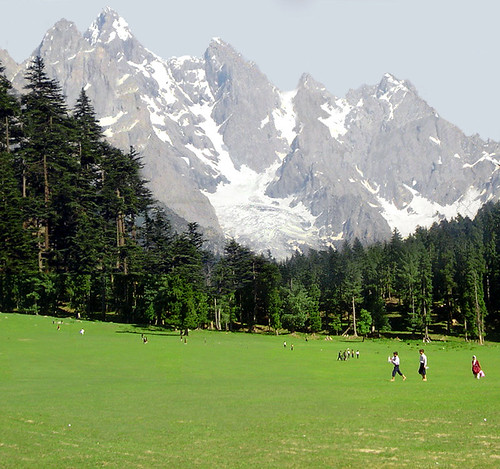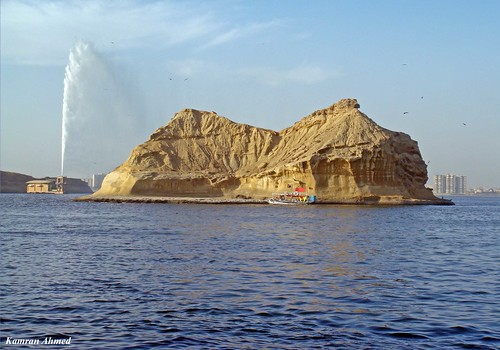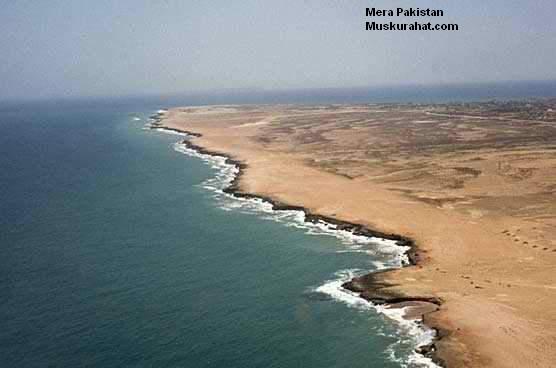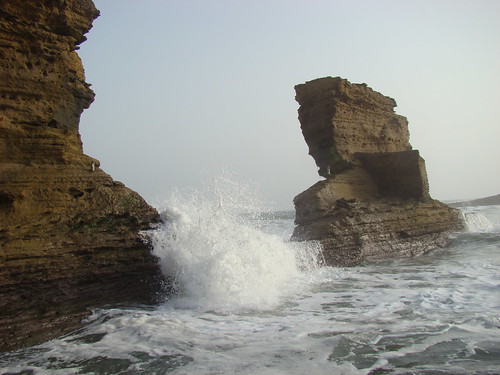Importance of Pakistan according to place.
Pakistan is a country of astonishing beauty and diversity, not to mention clear blue skies, stunning mountains and friendly, courteous people. Pakistan displays some of Asia’s most magnificent landscapes as it stretches from the Arabian Sea, its southern border, to some of the world’s most spectacular mountain ranges in the north. Pakistan is also home to sites that date back to word’s earliest settlements rivaling those of ancient Egypt and Mesopotamia.
Pakistan is a land of infinite options. You can mingle with the crowds in one of the more sophisticated beach resorts or wander through the historic cities like Lahore, Harappa, Moenjodoro. If it’s an activity holiday you’re looking for, Pakistan is one of Asia’s premier trekking and expedition destinations.
Nowhere in the world is such a great concentration of high mountains, peaks, glaciers, and passes except in Pakistan. Of the 14 over 8,000 meters high peaks on our earth planet, four occupy an amphitheatre at the head of Baltoro Glacier in the Karakoram Range: K-2 (8,611 meters, originally called Chogo-ri which in Balti language 'king of the mountains,' of all the world's mountains second only to Mount Everest), Gasherbrum-I (8,068 meters), Broad Peak (8,047 meters) and Gasherbrum-II (8,035 meters). There is yet another, which is equally great, Nanga Parbat (8,126 meters), located at the western most corner of the Himalayas. There are 42 other peaks which are higher than all the highest peaks of the other continents. In addition to that, there are 160 peaks over 7,000 meters and 700 others over 6,000 meters. The Northern Pakistan is also home to some of the longest glaciers outside Polar region; Siachen (72 kilometers), Hispar (61 kilometers), Biafo (60 kilometers), Baltoro (60 kilometers) and Batura (64 kilometers). Besides the high mountains, Northern Areas' longest glaciers including the Godwin Austin, Abruzzin and Baltoro which meet at Concordia forms the largest glacial lake at a height of 4720 meters.Two more ranges, by unique comparison minor in size, thrust their sinews and limbs into the Pamir Knot: the Pir Panjal with its peaks of just over 20,000 feet, and China's celestial mountain, the Kun Lun. Where these ranges merge, they form what many regard as the most impressive landscape that sometime recalls Shangri-La. This concentration makes northern Pakistan a trekkers' paradise.
The enchanting valleys of Hunza, Shigar, Khaplu, Ishkuman, Naltar, Gilgit, Skardu, Chitral, Kalash and the glacial lakes like Kachura, Satpara,Lalusar, and Saiful Muluk add unmatched grandeur to the beauty of the rugged mountains. The Northern Areas with its flora and fauna; the wildlife which can be seen in the form of snow leopards, ibexes and urials; and the variety of people who live in these areas with their diverse cultural heritage and millennia-old civilizations form a paradise for the tourists, trekkers, and mountaineers from all around the world.
You could try your hand at big game fishing or horse riding, learn how to windsurf or water ski. Other unmissable experiences include Qawwali (Pakistan’s answer to soul music), country fairs where centuries-old folk traditions are lovingly reenacted, and mouthwatering Pakistani and Moghul foods. Pakistan is a country ripe for discovery.
Located in South Asia, Pakistan shares an eastern border with India and a north-eastern border with China. Iran makes up the country’s south-west border, and Afghanistan runs along its western and northern edge. The Arabian Sea is Pakistan’s southern boundary with 1,064 km of coastline.
The terrain varies from rugged and mountainous to flat, alluvial plains. Karachi, the largest city in Pakistan, is situated on the shores of the Arabian Sea near the mouth of the Indus.The streets are lively with hundreds of street restaurants, teahouses, samosa and juice stalls. Boats can be hired to sail out of the harbor.
Lahore, is a historic, bustling city with buildings of pink and white marble. There is plenty to see: bazaars, the Badshahi Mosque – one of the largest mosques in the world and an example of Moghul architecture rivaled only by the Taj Mahal.
Islamabad, the capital of Pakistan since 1963, and Rawalpindi, are both located on the Potohar Plain. The old part of the town boasts fine examples of local architecture and the narrow streets are crammed with bazaars where craftsmen are still using traditional methods.
Pakistan is a country of astonishing beauty and diversity, not to mention clear blue skies, stunning mountains and friendly, courteous people. Pakistan displays some of Asia’s most magnificent landscapes as it stretches from the Arabian Sea, its southern border, to some of the world’s most spectacular mountain ranges in the north. Pakistan is also home to sites that date back to word’s earliest settlements rivaling those of ancient Egypt and Mesopotamia.
Pakistan is a land of infinite options. You can mingle with the crowds in one of the more sophisticated beach resorts or wander through the historic cities like Lahore, Harappa, Moenjodoro. If it’s an activity holiday you’re looking for, Pakistan is one of Asia’s premier trekking and expedition destinations.
Nowhere in the world is such a great concentration of high mountains, peaks, glaciers, and passes except in Pakistan. Of the 14 over 8,000 meters high peaks on our earth planet, four occupy an amphitheatre at the head of Baltoro Glacier in the Karakoram Range: K-2 (8,611 meters, originally called Chogo-ri which in Balti language 'king of the mountains,' of all the world's mountains second only to Mount Everest), Gasherbrum-I (8,068 meters), Broad Peak (8,047 meters) and Gasherbrum-II (8,035 meters). There is yet another, which is equally great, Nanga Parbat (8,126 meters), located at the western most corner of the Himalayas. There are 42 other peaks which are higher than all the highest peaks of the other continents. In addition to that, there are 160 peaks over 7,000 meters and 700 others over 6,000 meters. The Northern Pakistan is also home to some of the longest glaciers outside Polar region; Siachen (72 kilometers), Hispar (61 kilometers), Biafo (60 kilometers), Baltoro (60 kilometers) and Batura (64 kilometers). Besides the high mountains, Northern Areas' longest glaciers including the Godwin Austin, Abruzzin and Baltoro which meet at Concordia forms the largest glacial lake at a height of 4720 meters.Two more ranges, by unique comparison minor in size, thrust their sinews and limbs into the Pamir Knot: the Pir Panjal with its peaks of just over 20,000 feet, and China's celestial mountain, the Kun Lun. Where these ranges merge, they form what many regard as the most impressive landscape that sometime recalls Shangri-La. This concentration makes northern Pakistan a trekkers' paradise.
The enchanting valleys of Hunza, Shigar, Khaplu, Ishkuman, Naltar, Gilgit, Skardu, Chitral, Kalash and the glacial lakes like Kachura, Satpara,Lalusar, and Saiful Muluk add unmatched grandeur to the beauty of the rugged mountains. The Northern Areas with its flora and fauna; the wildlife which can be seen in the form of snow leopards, ibexes and urials; and the variety of people who live in these areas with their diverse cultural heritage and millennia-old civilizations form a paradise for the tourists, trekkers, and mountaineers from all around the world.
You could try your hand at big game fishing or horse riding, learn how to windsurf or water ski. Other unmissable experiences include Qawwali (Pakistan’s answer to soul music), country fairs where centuries-old folk traditions are lovingly reenacted, and mouthwatering Pakistani and Moghul foods. Pakistan is a country ripe for discovery.
Located in South Asia, Pakistan shares an eastern border with India and a north-eastern border with China. Iran makes up the country’s south-west border, and Afghanistan runs along its western and northern edge. The Arabian Sea is Pakistan’s southern boundary with 1,064 km of coastline.
The terrain varies from rugged and mountainous to flat, alluvial plains. Karachi, the largest city in Pakistan, is situated on the shores of the Arabian Sea near the mouth of the Indus.The streets are lively with hundreds of street restaurants, teahouses, samosa and juice stalls. Boats can be hired to sail out of the harbor.
Lahore, is a historic, bustling city with buildings of pink and white marble. There is plenty to see: bazaars, the Badshahi Mosque – one of the largest mosques in the world and an example of Moghul architecture rivaled only by the Taj Mahal.
Islamabad, the capital of Pakistan since 1963, and Rawalpindi, are both located on the Potohar Plain. The old part of the town boasts fine examples of local architecture and the narrow streets are crammed with bazaars where craftsmen are still using traditional methods.

























.jpg)

.jpg)

No comments:
Post a Comment